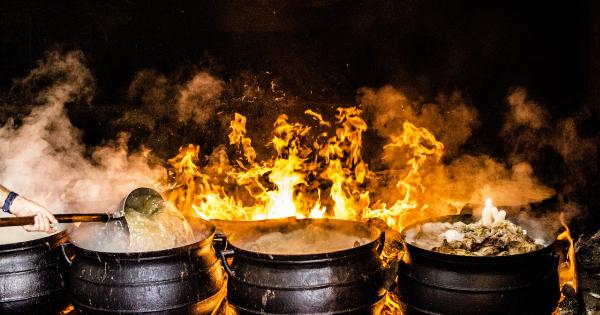Non-stick cookware has become an integral part of modern kitchens. It offers convenience, ease of cooking, and effortless cleaning.
However, there have been concerns about the health implications of using non-stick cookware due to the chemicals used in their production. In this article, we will explore whether non-stick cookware is truly a healthy choice for your kitchen.
Understanding Non-Stick Cookware
Non-stick cookware is made by applying a non-stick coating to the surface of the cookware, typically made of aluminum. The most commonly used coating is a synthetic polymer called polytetrafluoroethylene (PTFE), also known by the brand name Teflon.
This coating prevents food from sticking to the pan and makes cooking and cleaning easier.
The Controversy Surrounding Non-Stick Cookware
One of the main causes of concern regarding non-stick cookware is the potential release of toxic fumes when the cookware is heated to high temperatures.
At temperatures above 500°F (260°C), the non-stick coating can begin to break down and release harmful chemicals.
One of the chemicals released during the breakdown of PTFE is perfluorooctanoic acid (PFOA). PFOA has been linked to various health issues, including thyroid disease, certain types of cancer, and infertility.
However, it’s important to note that PFOA is no longer used in the production of non-stick cookware since 2015, thanks to industry regulations and agreements.
The Safety of Non-Stick Cookware
Non-stick cookware is considered safe for everyday use as long as it is used and maintained correctly. Here are some important factors to consider:.
Choosing High-Quality Non-Stick Cookware
When purchasing non-stick cookware, opt for high-quality brands that are known for their safety standards. Look for cookware that is PFOA-free, meaning it does not contain the harmful chemical once associated with non-stick coatings.
Additionally, check if the cookware has undergone safety certifications from regulatory bodies like the FDA (Food and Drug Administration).
Using Non-Stick Cookware Safely
To ensure the safe use of non-stick cookware, follow these guidelines:.
Avoid Overheating
Non-stick cookware should not be subjected to high heat. Avoid using it on high heat settings, especially for prolonged periods. Excessive heat can damage the non-stick coating and increase the chances of chemical release.
Avoid Metal Utensils
While non-stick cookware is designed to be scratch-resistant, it is still best to avoid using metal utensils. Opt for silicone, wooden, or plastic utensils that won’t damage the non-stick surface.
Refrain from Cooking Sprays
Cooking sprays, especially those containing aerosol, can damage the non-stick coating over time. Instead, use cooking oils or butter to prevent food from sticking.
Regularly Inspect for Damage
Inspect your non-stick cookware regularly for any signs of wear or damage. If the coating is scratched or peeling, it is best to replace the cookware, as it may release harmful chemicals during cooking.
Alternatives to Non-Stick Cookware
If you prefer to avoid non-stick cookware altogether, there are several alternative options available:.
Stainless Steel Cookware
Stainless steel cookware is a popular choice for its durability and safety. It does not require a non-stick coating, as proper preheating and oiling of the pan can prevent food from sticking.
Cast Iron Cookware
Cast iron cookware is known for its excellent heat retention and even cooking. While it requires special care, such as seasoning and hand-washing, it is a versatile and safe option.
Ceramic Cookware
Ceramic cookware has a naturally non-stick surface and is free from any toxic coatings. It provides a safe alternative to traditional non-stick cookware.
Conclusion
Non-stick cookware can be a safe and healthy choice for your kitchen when used correctly and with high-quality products.
By following the guidelines for safe use and maintenance, you can enjoy the convenience of non-stick cookware without worrying about potential health risks. However, if you prefer to avoid non-stick coatings altogether, there are various alternative cookware options available that can meet your cooking needs.





























